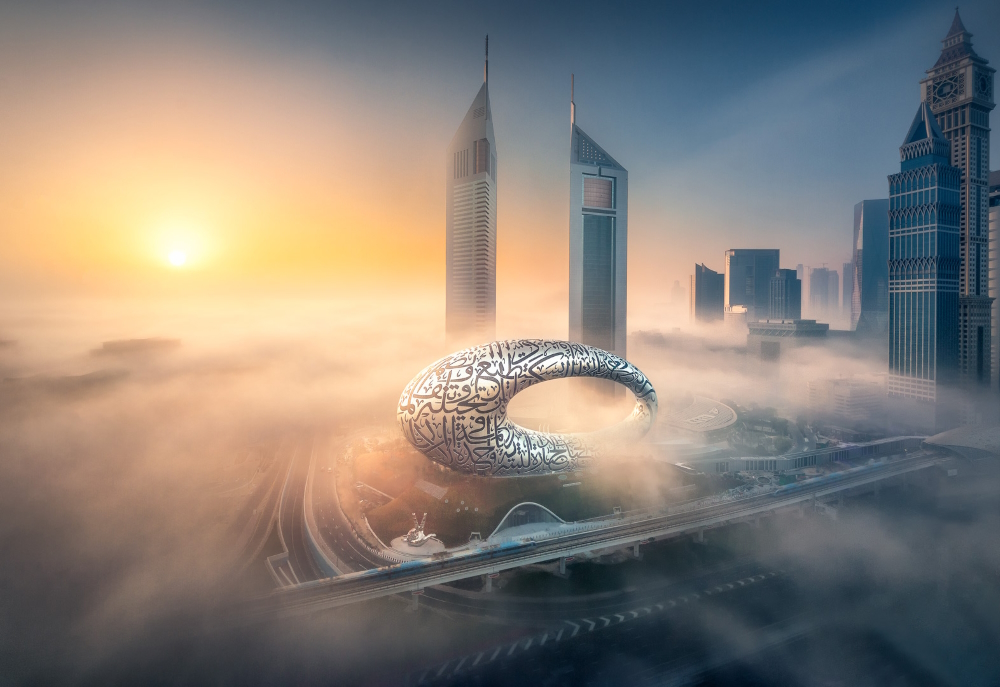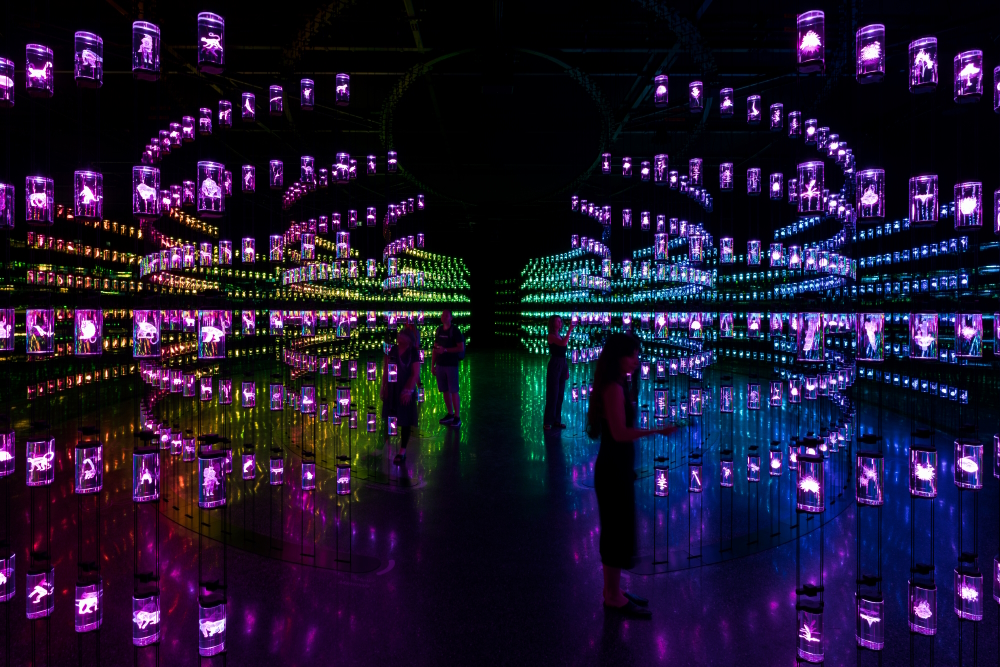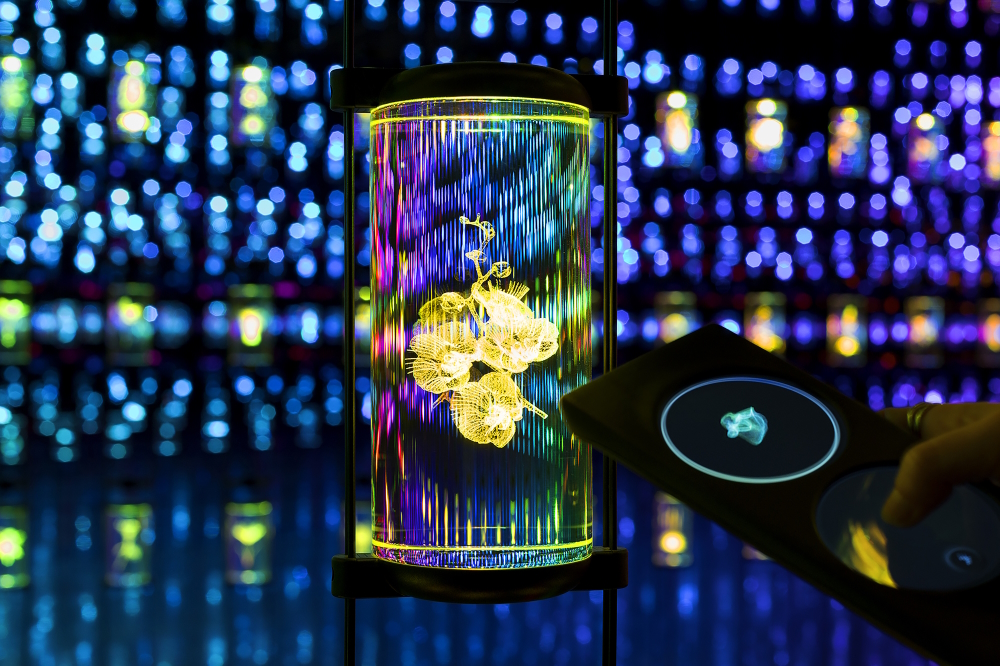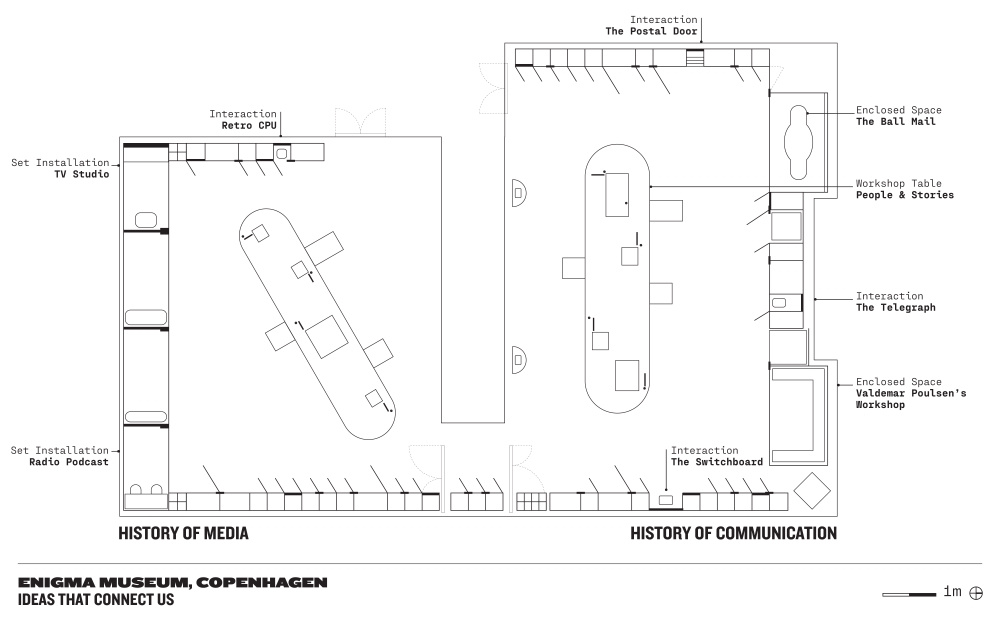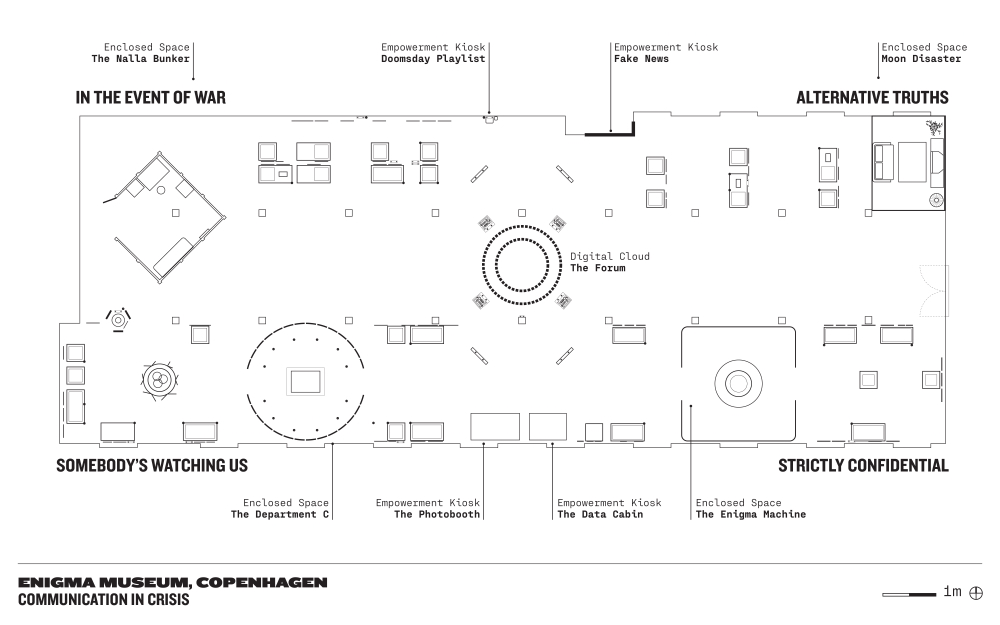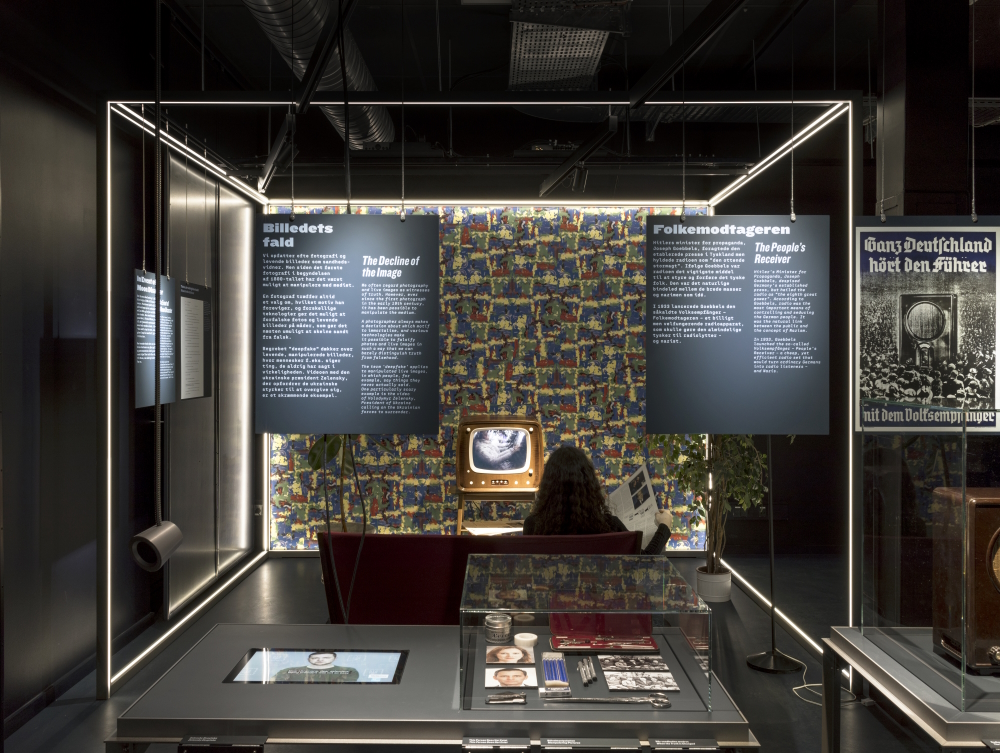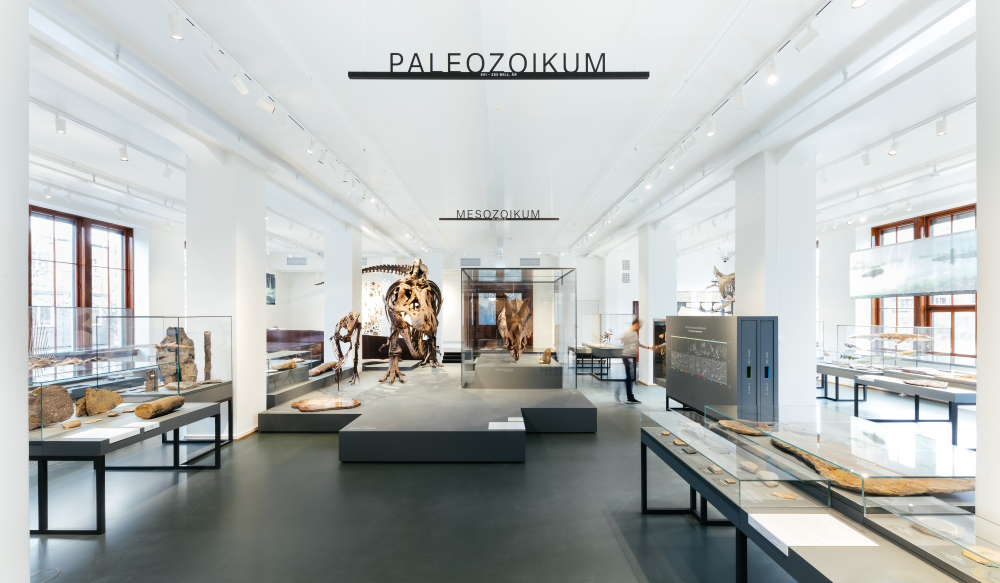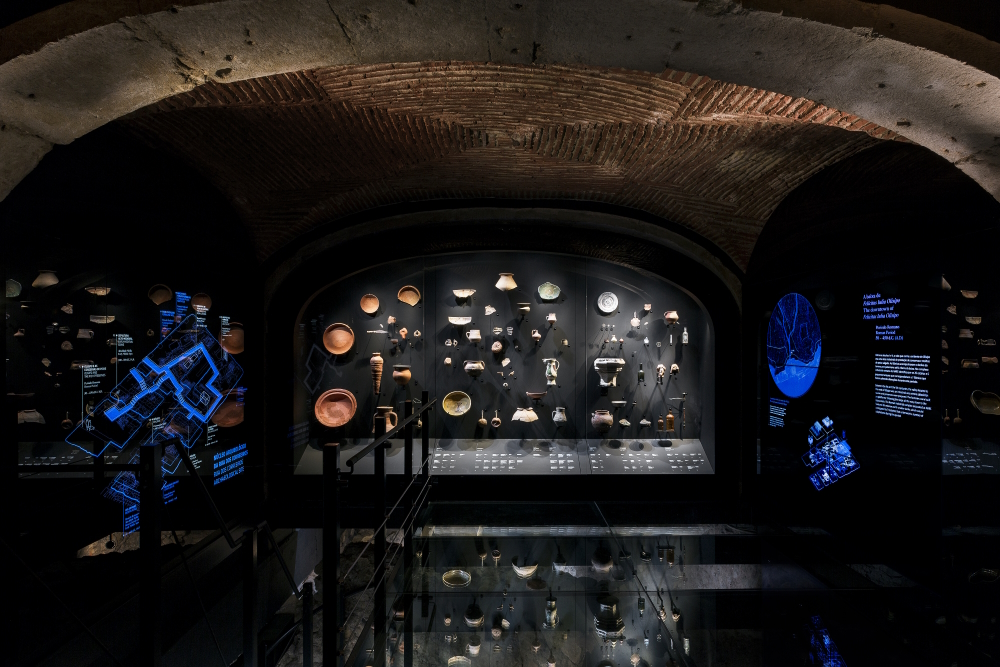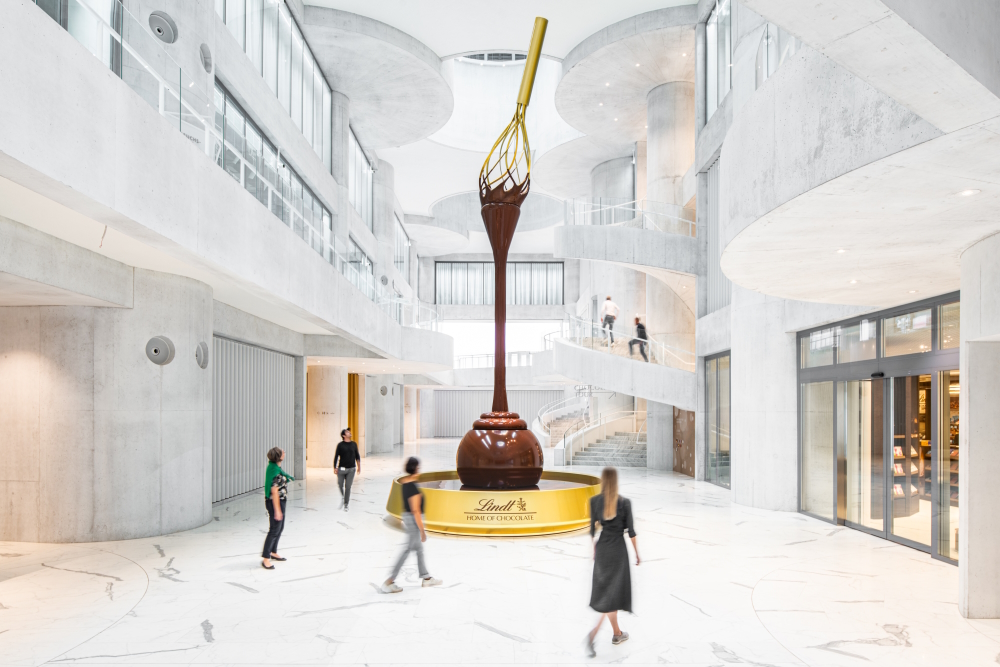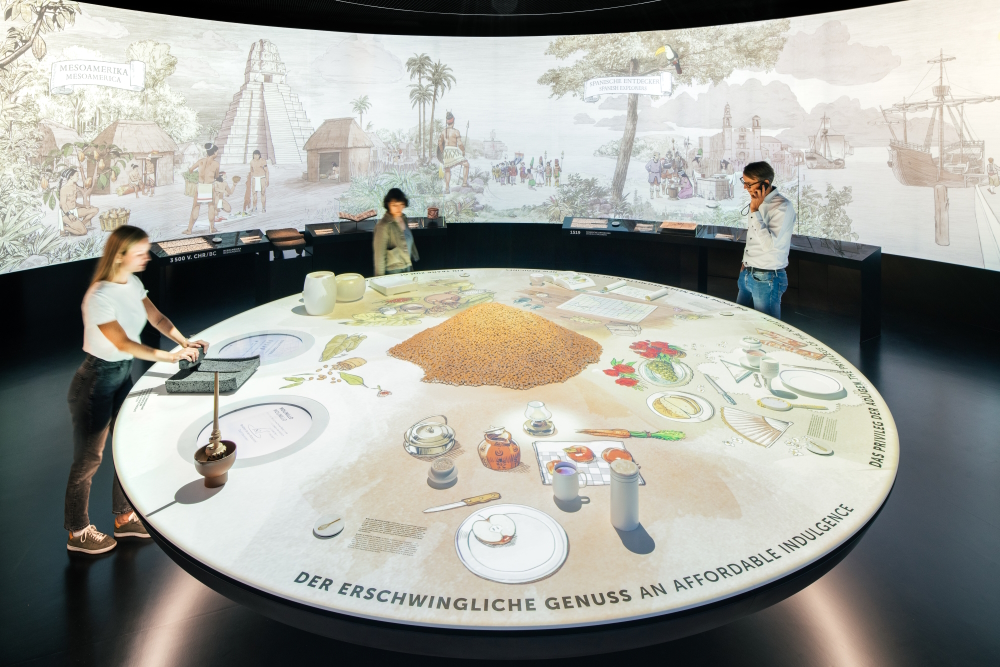Shirin Frangoul-Brueckner
Grand Egyptian Museum- & Museum Of The Future-architect / designer
Iraq / Germany
Grand Egyptian Museum (GEM), the largest archaeological museum in the world dedicated to one civilization, in Giza (Egypt). Museum of the Future (Dubai, Arab Emirates). ENIGMA - Museum of Communication (Copenhagen, Denmark). Natural History Museum (Oslo, Norway). NARC - Núcleo Arqueológico da Rua dos Correeiros (Lisbon, Portugal). Lindt – Home Of Chocolate (Kilchberg, Switzerland). Musée Atelier Audemars Piguet (Le Brassus, Switzerland). Seven out of numerous spectacular examples by Atelier Brueckner’s scenographic works of art. This German based practice is one of the leading international companies in the field of museum and exhibition design. The co-founder’s motto sounds demanding, provocative, self-confident and visionary at the same time: "making the impossible possible"!
Shirin Frangoul-Brueckner
Grand Egyptian Museum- & Museum Of The Future-architect / designer
Iraq / Germany
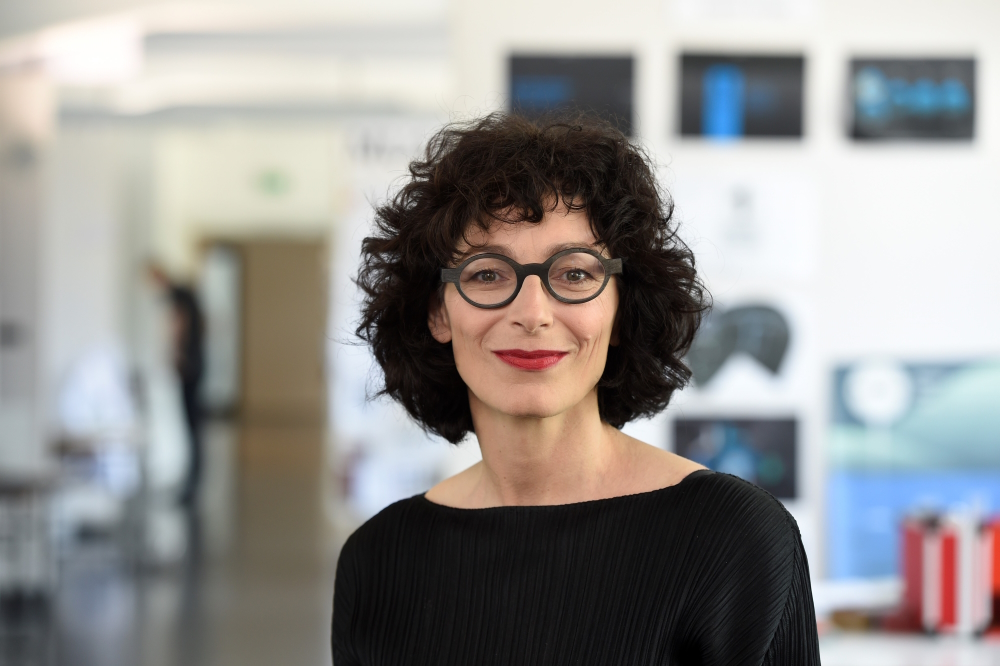
More than 200 national and international awards attest to the worldwide success of this studio. It was founded in 1997 by Shirin Frangoul-Brueckner and architect/stage designer Uwe R. Brueckner (quit in 2020). Since then she (* 1967 in Bagdad, Iraq) who has studied architecture and bears a higher diploma in architecture leads the company in cooperation with partners as the managing director. „Atelier Brueckner conceives and designs narrative architecture and spaces for brands, exhibitions, trade fairs and museums. From content and messages, we develop surprising ideas and create memorable concepts that set international standards“ (self-description on website). „In order to do justice to the increasing complexity of architectures and exhibitions, the studio’s 120 employees (from 27 nations speaking 21 languages) work in interdisciplinary teams. Architects, graphic designers, scientists, art directors, product and media designers develop the concepts and oversee their realisation“ (Wikipedia). In 2019 a book was published that looked back on „20 years of Atelier Brueckner“ (432 pages, English).
At the beginning of her speech at the JUNG architecture talks in Duesseldorf/Germany on June 30th 2022 this CEO spoke two remarkable sentences: „Don't get bogged down with problems for long, but look for the solutions. Then we make solutions possible."
Shirin Frangoul-Brueckner lives in Stuttgart, Germany.
Interview May 2023
Conceiving and designing narrative architecture: developing spatial images, narratives and choreographies that enable visitors to connect with content and stories
INTUITION/IMAGINATION
?: How does intuition present itself to you – in form of a suspicious impression, a spontaneous visualization or whatever – maybe in dreams?
For me, intuition is an inner feeling or gut instinct. It is a powerful tool that has helped me in my creative endeavours over the years. With it comes an inner strength and knowledge of what can be achieved and the strong belief in one's own abilities and possibilities.
Born in Baghdad and raised in Germany, I have been exposed to a wide range of creative influences, with a deep respect and openness to different cultures.
?: Will any ideas be written down immediately and archived?
Absolutely! When an idea pops up, I immediately make sure to capture this fleeting thought, because every initial idea can be the basis for something new.
?: How do you come up with good or extraordinary ideas?
The best ideas come from working in alternatives to oven the full range and then stepping back and looking at the designs from a different perspective. I try to do this by exploring different possibilities, brainstorming with a larger team, asking questions and thinking outside the box.
?: Do you feel that new creative ideas come as a whole or do you get like a little seed of inspiration that evolves into something else and has to be realized by endless trials and errors in form of constant developments up until the final result?
Creative ideas often start with a spark of inspiration and I then develop them further. A strong concept is the foundation for any good project. With my team, I work to refine it and bring it to life. And definitely to work on a concept through all stages, to the very detail will bring it from inspiration to a successful design.
?: What if there is a deadline, but no intuition? Does the first fuel the latter maybe?
I have deadlines every day. The pressure of the deadline causes me to tap into my intuition and draw upon my experience and knowledge to come up with an idea quickly and efficiently. My daily yoga practice is a good balance for me.
INSPIRATION
?: What inspires you and how do you stimulate this special form of imaginativeness?
I find inspiration in unexpected places such as nature, art and history – basically by going through life with eyes wide open. Art and nature inspire me most. I love going to art exhibitions and doing outdoor sports – sometimes yoga in my garden. Spending time with other creative people is a great thing to do. Doing something completely unrelated to the projects I am working on, leads to new ideas that would never have come if had stuck to the same approach. In any case, everything is connected. I am happy to live an extraordinary life with unconventional options that come to by itself – even when they are not expected.
?: How do you filter between ideas worthwhile pursuing and bad ones that you just let go of?
What does good and bad mean? Does it depend on whether something can be realized if it is realistic? Many of the best ideas do not even have this intention ... but subsequently are a trigger for other and new approaches.
?: Has it to appeal to you primarily or is its commercial potential an essential factor?
When developing a concept, it's not about it appealing to me personally, it's important to reflect the task, the content and the target group. Commercial factors are always important, because creative work should be valued, even if not all decisions are made with a commercial focus.
?: Do you revisit old ideas or check what colleagues/competitors are up to at times?
We have developed a philosophy in the field of exhibition design that forms the basis of our way of working. And of course, it is important to evaluate and look at what competitors are doing. Having a wide repertoire of knowledge of historical examples as well as actual new approaches and possibilities forms the base of our work. Especially in current times, where new options about AI are opening up, it is important to stay on the ball and play it confidently. Exhibition design has always been a field that has explored and pushed boundaries.
CREATIVITY
?: Which time/place/environment suits your creative work process the best (tranquillity or pressure) and which path do you take from theory/idea to creation?
My office doors are always open. I can concentrate on my work and – the next moment – be there for the people who want to contact me to find solutions or get decisions.
As for the process from theory/idea to creation - we start by researching and studying the subject matter in depth. At the same time we collect ideas, whether from our own library or elsewhere. Our philosophy is 'form follows content' (Uwe R. Brueckner). Following this, we develop spatial images, narratives and choreographies that enable visitors to connect with content and stories. The visitor is in the center of our design intention.
?: What is better in the realization process: speed and force creativity i.e. grasp the magic of the moment, or a slow, ripening process for implementation/elaboration?
Each project is divided into different phases and each phase requires a different approach. Brainstorming quickly and flexibly to develop a variety of design alternatives is just as important as planning concepts thoroughly and in detail.
?: Do you have any specific strategies you use when you are feeling stuck creatively?
When I am stuck, I start breaking down my projects into smaller tasks. Not everything has to be decided immediately – some things solve themselves or by time evolving the solutions get visible. The important thing is to move always forward, then something new can emerge unexpectedly.
Important to me is a physical balance to the mental creative work, and input from the outside - be it through conversations with colleagues or by visiting exhibitions or artistic installations.
?: How important are self-doubt and criticism (by others) during such a process i.e. is it better to be creative on your own, only trust your own instincts, or in a team?
With our interdisciplinary team of 120 employees and 12 different professions, we develop unique exhibition projects. It always takes a variety of creative minds to develop something new, but it is also important to bring the diverse ideas together into one concept, to make directional decisions at the right moment. That's what I see as my responsibility.
?: Should a creative always remain true to him-/herself including taking risks & going against the flow or must one, for reasons of (commercial) survival, make concessions to the demands of the market, the wishes of clients and the audience’s expectations?
In any case, as designers, we should always believe in the cause and fight for good design. However, we should always keep in mind the visitor for whom we make our projects. Our exhibitions should inspire people and convey content to them. It is our task, together with the client, to find solutions as to how this can best be achieved.
?: How is innovation still possible if one has established a distinctive style and, just in case, is it good to be ahead of one’s time even one hazards not being understood?
Constant change and evolution founded our company, our team, our projects in 1997 and challenges always have evolved. We have developed from a start-up to an internationally operating company, precisely because we have always been courageous, recognized opportunities and seized them. There is no distinctive design style, but our philosophy 'form follows content' which we live up to. We are understood, because we address the people evoking long-lasting memories. We are known for creating experiences, exhibition design that pushes the boundary towards art and always considers usability and design.
?: When does the time come to end the creative process, to be content and set the final result free – or is it work-in-progress with an endless possibility of improvement?
The creative process runs through the entire duration of a project from initial idea to completion. Creative tasks change during the process, but only the finished work reflects the sum of the decisions. And of course, after completion we evaluate the results and check how our design is received.
?: In case of failure – or worse – a creativity crisis how do you get out of such a hole?
We should not dwell too long on failure but learn from it and use our energy to focus on new tasks. Also we are a wonderful that we are a team and support each other.
SUCCESS
?: Should/can one resist the temptation to recycle a ‘formula’ one’s successful with?
Constant renewal is important not only professionally but also personally, this does not mean constantly changing working principles and approaches, but purposeful adaptation and development. Our philosophy 'form follows content' defines on the one hand our design approach, but is also open enough to allow any change.
?: Is it desirable to create the ultimate/timeless work, but doesn’t “top of the ladder” bring up the question of “what’s next?” i.e. isn’t such a personal peak “the end”?
We always strive for the best possible result and it is always a product of its time. New content, new markets, new clients have always enabled us to take on new projects that we had not initially anticipated. And there is always one after that we should look forward to and be curious about
MY FAVORITE WORK:
'The Grand Egyptian Museum' in Giza near Cairo is certainly one of our most outstanding projects. It's a once-in-a-lifetime opportunity: the museum will show the tomb treasure of Tutankhamun in its full glory for the first time and we had the chance to design the exhibition for it.
I am proud to work self-determined, I am proud to have taken all challenges along the last 25 years of professional life, I am proud and grateful for the trust of my clients, but also of my creative team who have played a major role in our success.


